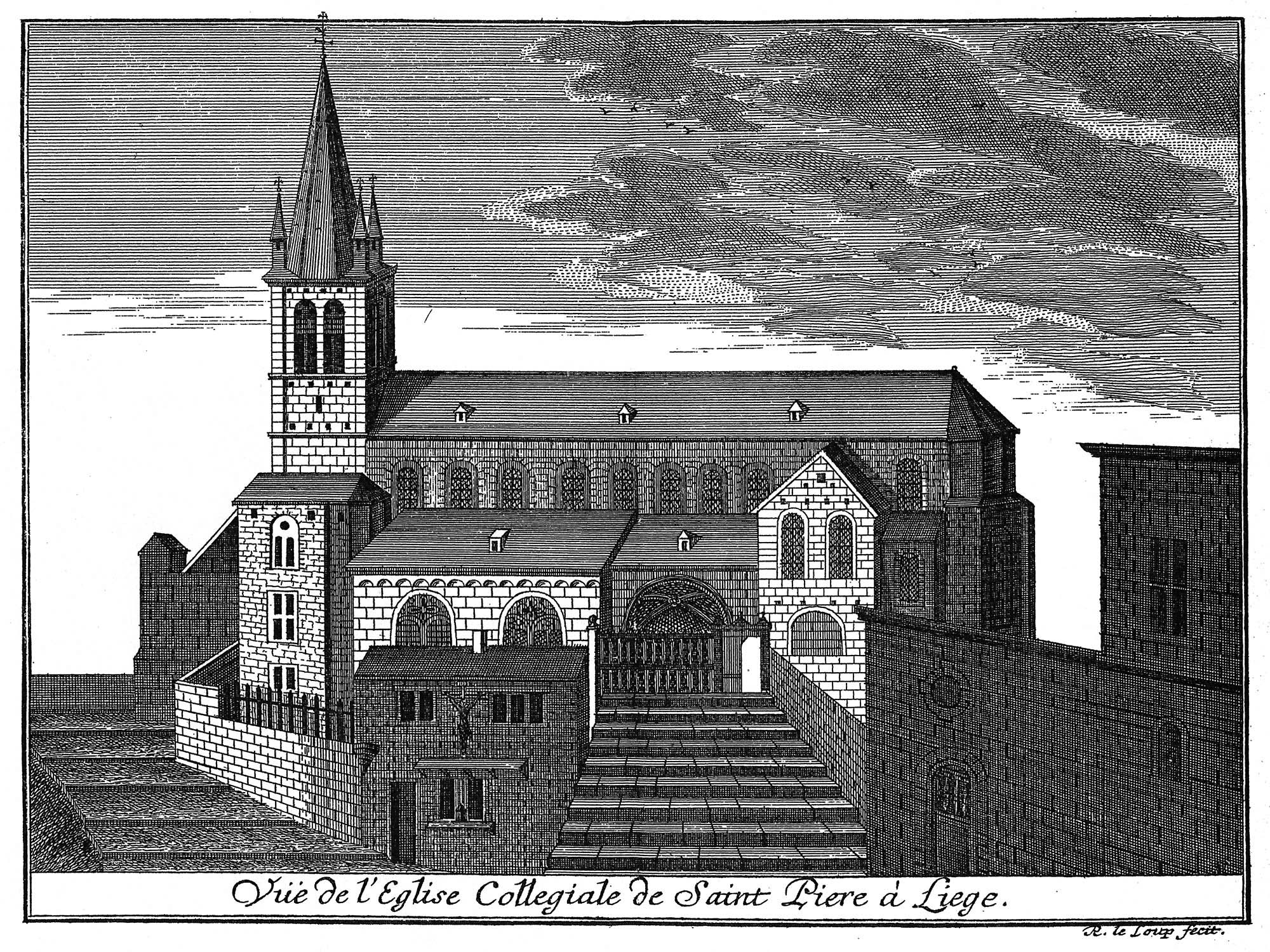St Peter's Church, Liège on:
[Wikipedia]
[Google]
[Amazon]
 St Peter's Church (French - ''Collégiale Saint-Pierre'') was a church in
St Peter's Church (French - ''Collégiale Saint-Pierre'') was a church in
 St Peter's Church (French - ''Collégiale Saint-Pierre'') was a church in
St Peter's Church (French - ''Collégiale Saint-Pierre'') was a church in Liège
Liège ( , , ; wa, Lîdje ; nl, Luik ; german: Lüttich ) is a major city and municipality of Wallonia and the capital of the Belgian province of Liège.
The city is situated in the valley of the Meuse, in the east of Belgium, not far from b ...
. It was founded in 712 by bishop Hubertus
Hubertus or Hubert ( 656 – 30 May 727 A.D.) was a Christian saint who became the first bishop of Liège in 708 A.D. He is the patron saint of hunters, mathematicians, opticians and metalworkers. Known as the "Apostle of the Ardennes", he w ...
on the site of a Merovingian
The Merovingian dynasty () was the ruling family of the Franks from the middle of the 5th century until 751. They first appear as "Kings of the Franks" in the Roman army of northern Gaul. By 509 they had united all the Franks and northern Gauli ...
cemetery (the latter was rediscovered in the 19th century) and construction began that same year. Intending it as a monastery church, the bishop also built a cloister and brought in 15 monks from Stavelot Abbey. On his death in 727, the church's crypt became Hubert's first resting place, before his body was moved to Andage (now Saint-Hubert) in the Ardennes.
The Vikings destroyed the original church in 914 and a new one was built and consecrated in 931. In 945 it was made a collegiate church with 30 secular canons. It was damaged by fire in 1185 but eleven years later had recovered enough to host a synod. It was finally closed in 1797 in the wake of the Liège Revolution
The Liège Revolution, sometimes known as the Happy Revolution (french: Heureuse Révolution; wa, Binamêye revolucion), against the reigning prince-bishop of Liège, started on 18 August 1789 and lasted until the destruction of the Republic ...
and demolished in 1811, though the foundations of the former cloister survived until 1860.
Saint-Pierre
category:Former collegiate churches in Belgium
{{Belgium-church-stub